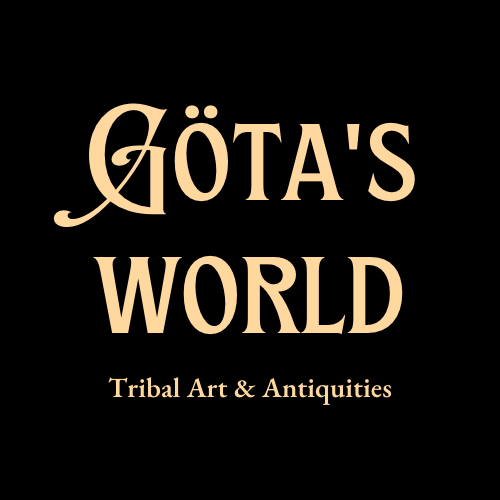Mesopotamian White Stone Recumbent Bull Amulet
Mesopotamian White Stone Recumbent Bull Amulet
Couldn't load pickup availability
Bronze Age, Uruk III Culture or Early Jemdet Nasr Period, c. 3000–2900 BC, Tell Jemdet Nasr, Southern Mesopotamia
An exceptional and exceedingly rare amulet carved in the form of a recumbent bull, rendered in fine white stone—likely marble or limestone. This compact yet powerful piece reflects the sophisticated artistry and symbolic richness of early Mesopotamian culture. The animal lies couchant, its legs tucked beneath its body in a posture of calm vigilance. Delicate incisions define the ears, limbs, and musculature with remarkable refinement for such an early period.
A hole drilled laterally through the top of the figure allowed it to be worn or suspended, perhaps on a cord or as part of a ritual assemblage. The eyes, now hollow, once held inlays—possibly of colored stone, shell, or metal—suggesting a preciousness beyond mere ornament. The underside is incised with a geometric or symbolic motif, now almost completely gone, intended to leave a distinctive impression in clay or wax. This suggests the amulet may have served a secondary function as a personal seal or a marker of identity and ownership.
Comparable examples are known from the archaeological site of Jemdet Nasr, associated with the Uruk III phase, and demonstrate the continuity of zoomorphic symbolism in Mesopotamian ritual and administrative contexts. The bull, a potent symbol of strength, fertility, and divine power, held a central role in Mesopotamian mythology. Most famously, the "Bull of Heaven" was sent by the goddess Inanna to punish Gilgamesh, King of Uruk, in one of the earliest and most enduring epics of human literature.
This finely crafted amulet not only embodies the artistic and spiritual sensibilities of the early Bronze Age in Mesopotamia but also serves as a poignant artifact of humanity’s first urban civilizations—where symbolism, mythology, and statecraft were inextricably entwined.
Good condition. Surface wear and abrasions commensurate with age, nicks and chip, with encrusted patina and earthen deposits throughout. Size approx. 6,1cm x 2,7cm x 3,5cm.
Provenance: Swedish private collection.
For a similar example see:
Amulet, National Museums Liverpool, Accession number: 1967.32.2 (https://www.liverpoolmuseums.org.uk/artifact/amulet-16)
Seal amulet in the form of a reclining cow, The Metropolitan Museum of Art, Accession Number: 41.160.235 (https://www.metmuseum.org/art/collection/search/323826)




-
Shipping
The shipment will be prepared in the course of 3-5 days and dispatched via Posti Group Oyj or purchased item(s) can be picked up from our shop during the store's opening hours (Tarkk’ampujankatu 4, 00140, Helsinki, Finland). Within the Finland, all items are shipped via Posti Group Oyj unless otherwise requested. We pack the items carefully and mainly in recycled materials because we want to save nature. You will receive the tracking number for your items by e-mail.
-
Returns
Returns and exchange will be accepted within fourteen days (14) of receipt at the purchaser’s cost to include freight and packaging. Items must be returned in the same condition as when they were shipped, and will not be accepted if damaged or altered in any way. Please inform us via email (info@gotanmaailma.fi) or by calling +358408408352 before sending. We do not accept returns more than 14 days after delivery.




